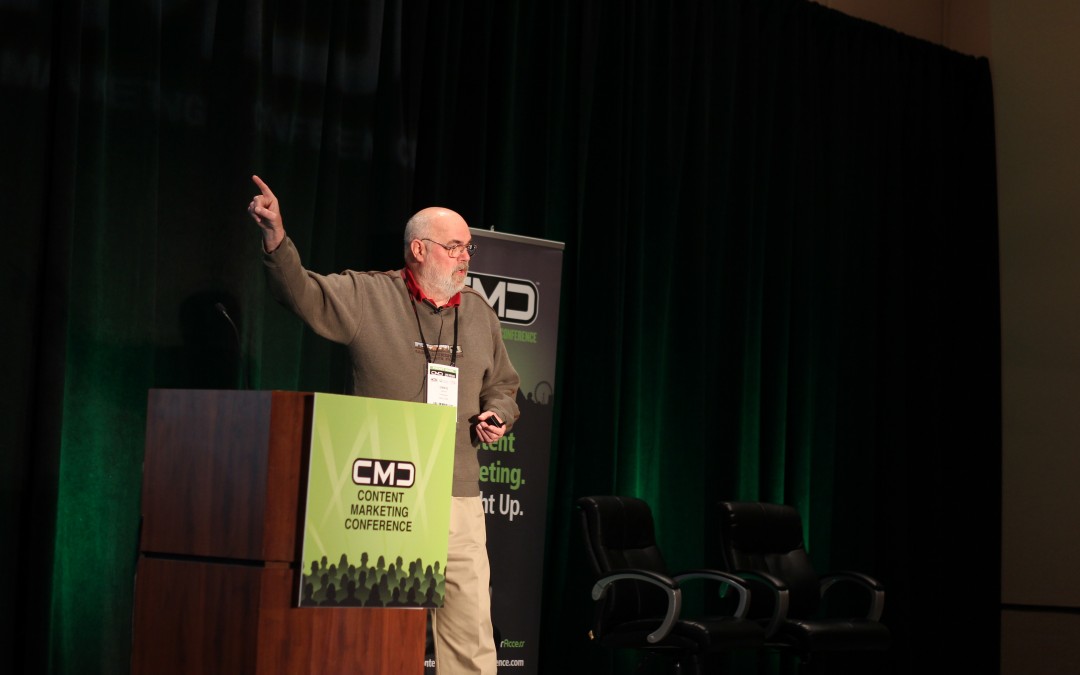If you want to reach millennials, or any other target audience, digital video must be part of your marketing plan. Greg Jarboe, President and Co-Founder of SEO-PR, offered strategies and tips for using this engagement tool in his presentation at the 2016 Content Marketing Conference “Exploring the New World (Mundus Novus) of Digital Video.” He credits YouTube for starting the trend toward content marketing with video. Multi-platform efforts changed things again, and so did Vine and Facebook. Virtual reality will also transform video once more.
Why video?
An Animoto survey of 1,051 adult consumers discovered:
- 80 percent of millenials find video helpful when researching online purchases.
- 70 percent are likely to watch a video during online shopping.
- 76 percent follow companies on YouTube.
And it’s not just individual consumers who depend on the moving image, according to a survey of 3,000 business-to-business researchers by Millward Brown Digital and Google:
- 70 percent of B2B buyers watch videos as part of their buying.
- 48 percent view 30 minutes or more of videos during their research.
Who’s creating video?
While anyone can put a video online, look to influencers for engagement savvy. Influencers know how to get eyes on their prize, often by collaborating with major brands:
- 120,000 influencers uploaded 614,000 noteworthy videos to YouTube in the past year. These uploads received 365 billion views and 5.2 billion engagements. An engagement refers to a comment or share.
- 6,987 brands uploaded 28,000 noteworthy videos, which received 31.6 billion views and 432 million engagements.
If you want to create a successful video marketing campaign, contact an influencer.
What do you put on video?
As of March 2016, two types of videos proved the most popular:
- Tasty on Buzzfeed specializes in food with videos that show how to make them. The content received 2.2 billion views for that month alone.
- LEGO on YouTube, which features toys created with the famous blocks, became the most-watched brand with 172 million views for the month.
While food and toys gain the most views, the most effective videos are those showing demonstrations, tutorials, or customer testimonials, according to a survey of business, marketing, and sales pros by Ascend2 market researchers. Unfortunately, these were also the most difficult types of content to create.
How do you create effective video content?
Follow these steps, if you want to create video that delivers your message and engages your audience:
- Start with an eye-catching image because you only have 3 to 5 seconds to capture viewers attention.
- Facebook videos autoplay and start without sound, so if you’re publishing on that platform, use text or images exclusively for the first seconds. Find a way to get the viewer to turn up the volume, if audio is important to your message.
- Make your videos an average of 15 minutes long if you’re posting on YouTube, and about 90 seconds long if you’re posting on YouTube.
- Develop a strategy that puts videos on both YouTube and Facebook. YouTube is 11.3 times bigger than Facebook video in the US and 8.2 bigger globally. The larger platform garnered 8,061 years of collective viewing each day. Facebook videos get only 713 years, although that time is growing. Other platforms worth considering include Vine, Dailymotion, and Instagram.
- While views show how many people are looking at your videos, they don’t tell you whether anyone is actually watching the complete offering. Engagements are better metrics because they cover Likes, Comments, and Shares:
- In the past year, Facebook received 21.3 billion engagements, according to Tubular Labs.
- YouTube got 7 billion, Vine had 3.8 billion, Instagram earned 626 million, and Dailymotion received 5.5 million.
- Don’t forget to create for a mobile platform. Because smartphones are available all the time and handy to carry around, consumers rely on them when finding answers, making decisions about purchases, or discovering new things. To find content for your mobile video, identify moments where the goals of your audience and your brand join. Experiment with a vertical instead of horizontal format, so your creation looks better on a smartphone screen. Use relevant video ads to bring audiences to you.
- Plan for virtual reality. Although the technology is still in its infancy, YouTube and Facebook have bet on it. VR changes content and storytelling by putting the viewer in the middle of the action and granting him or her control of where to look and, in the future, where to go.
How do you measure effectiveness?
When dealing with the effectiveness of video, the best Key Performance Indicators to look at are engagement and economic value, according to Avinash Kaushik, co-Founder and Chief Education Officer for Market Motive.
Engagement shows whether viewers are sticking around to watch what you have to say and whether they find your message valuable enough to share some sort of action. Look at these three factors of engagement:
- Conversion Rate shows the ratio of comments to overall followers. Is what you have to say interesting enough to create a conversation?
- Amplification is the ratio of shares to followers. Is your message so unique that a viewer will stamp his or her brand on it before sending it to his or her friends?
- Applause measures the ratio of likes to followers? Is your content engaging enough that a viewer will react to it even without commenting or sharing it.
Economic value reveals whether your video is making you any money. Google Analytics added features to calculate this metric in two ways:
- Conversion rate per user divides outcomes by user. This will typically be higher than the goal conversion rate per session because people usually take multiple visits before they convert.
- Gross calculated profit equals revenue generated by the content marketing programs minus the sum of the Cost of Goods Sols and the Campaign cost. With this metric, content marketing transforms from being a cost to a revenue generator in the eyes of your boss.
Bottom line: digital video requires skill, time, and dedication to navigate effectively.

